Seasons’ Greetings. What does that actually mean? How does the season in which you navigate through your days affect your body, mind and spirit? And what in the world is going on? I shared the following on FB recently but can’t get it out of my head – actually not a bad thing – so am sharing it again:
 “Love intentionally, extravagantly, unconditionally. The broken world waits in darkness for the light that is you.” (Gratefullness.org)
“Love intentionally, extravagantly, unconditionally. The broken world waits in darkness for the light that is you.” (Gratefullness.org)
This particular December is packed with overlapping seasonal dates. As I write this, Winter Solstice has happened and now, thankfully, the short days are magically lengthening, even if by small increments. On the 21st I joined family and friends around a blazing bonfire with starry sky overhead and darkly lit woods behind. What a way to greet the solstice!
At one time I was warmly welcomed into a community that celebrated Hanukkah with devotion and enthusiasm. December 22nd, Hanukkah begins, a tradition I continue to respect and honor. December 24 is Christmas Eve, a day that means different things to different people.

I treasure this tiny Nativity (not 2″ high) carried home in a backpack by my daughter whose first semester abroad was spent in France, returning home just in time to celebrate Christmas.
As a child, Christmas Eve meant staying awake for a midnight church service and returning home to the tree where I was allowed to open one present before going to bed. As a parent the Eve of Christmas morning meant waiting until the kids were asleep and then staying up most of the night putting things together or stealthily suggesting that Santa had arrived with more stuff than could possibly fit down the chimney. And, of course, as a Christian, paying homage to the origins of the holy day.
Now, with adult children, Christmas Day is rich with significance. Refusing to let one sad thought enter my mind, I dredge up delightful memories and plunge headlong into sleepovers with my grandkids and fun-filled activities with my big kids. (always allowing them to do the cooking – I continue to hate to cook!)
Then on the 26th there’s Kwanzaa. Frankly, I know little about this holiday but feel deeply about multiculturalism, diversity and the unification of the many who live in our country.
But I DO know something about December 31st, a day to pull out all sorts of “re” words – resolve, renew, reflect, reorganize, reevaluate, regenerate, reset – please add on as many as you can!
There are two “re” words that have recently been highlighted for me and I share them here.
RECEIVE. As human beings, whether parent, care-giver, teacher, snow remover, sales person, medical care provider, trash hauler, pet sitter, you name it, we give, and we do so according to our personal commitment. Rarely do we allow ourselves to receive. A few weeks ago at a training at Kripalu, in each of the Vinyasa classes I joined, at the final pose, Savasana, we were invited to find stillness and to RECEIVE. Once planted, I have been watching that seed grow and invite you to do the same.
RELATIONSHIP. One of my favorite writers, Eugene Peterson, passed not that long ago. Speaking of his father, one of his son’s suggested that Peterson preached only one message – about RELATIONSHIP. So, I plant yet another seed and watch it grow. I observe relationship continuously. I try to practice relationship from my heart. RELATIONSHIP is a very large word.
So today, perhaps SEASONS’ GREETINGS is, in fact, the appropriate sentiment. I greet you in relationship and wish for you to receive peace, goodness, love.
May 2020 be a year of insight (with 2020 vision?) and action. May it be a year in which we, and those with whom we share this planet, enjoy enough and participate in the care and unity of all.
SEASONS’ GREETINGS, indeed



 Life is not a toggle switch. Exempting trauma, accident, lightening strikes and the like, life seems to plod or race from one stage to another, but always with some sort of modulation. Though arrival at the next event is the goal, perhaps it is in the interim, the preparation, the transition, that life is experienced authentically.
Life is not a toggle switch. Exempting trauma, accident, lightening strikes and the like, life seems to plod or race from one stage to another, but always with some sort of modulation. Though arrival at the next event is the goal, perhaps it is in the interim, the preparation, the transition, that life is experienced authentically. Today did we turn off summer and turn on autumn? I think not. This morning I took a few pictures of my gardens, loving the richness of color and the integration of signs of autumn, fallen leaves among the remaining blooms. Nature defines transition by the juxtaposition of the good with the bad, the colorful with the bland, the new with the old.
Today did we turn off summer and turn on autumn? I think not. This morning I took a few pictures of my gardens, loving the richness of color and the integration of signs of autumn, fallen leaves among the remaining blooms. Nature defines transition by the juxtaposition of the good with the bad, the colorful with the bland, the new with the old. Seasons teach us life lessons. Letting go of the past and moving on can be heartbreaking or exhilarating. While we honor the past for joys and sorrows, skills to progress and experience to rely upon for future challenges, we recognize that each step has led us to where we are now. We are grateful for the textured fabric of existence that weaves a piece of great beauty. We are reminded to protect and to give back.
Seasons teach us life lessons. Letting go of the past and moving on can be heartbreaking or exhilarating. While we honor the past for joys and sorrows, skills to progress and experience to rely upon for future challenges, we recognize that each step has led us to where we are now. We are grateful for the textured fabric of existence that weaves a piece of great beauty. We are reminded to protect and to give back.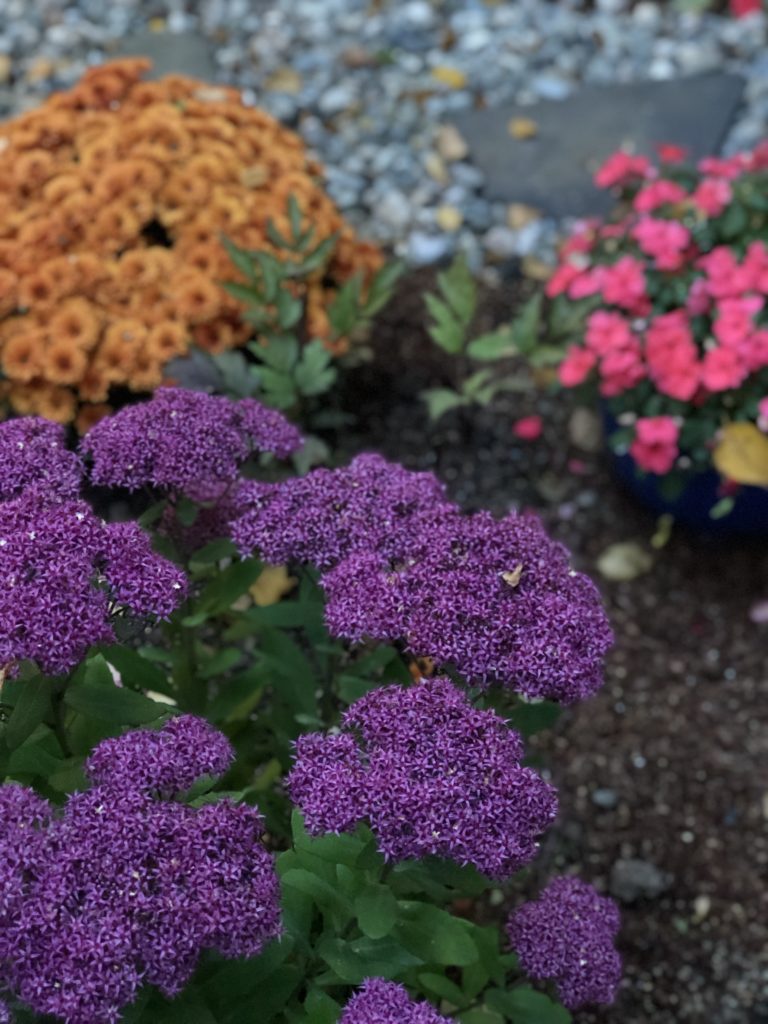
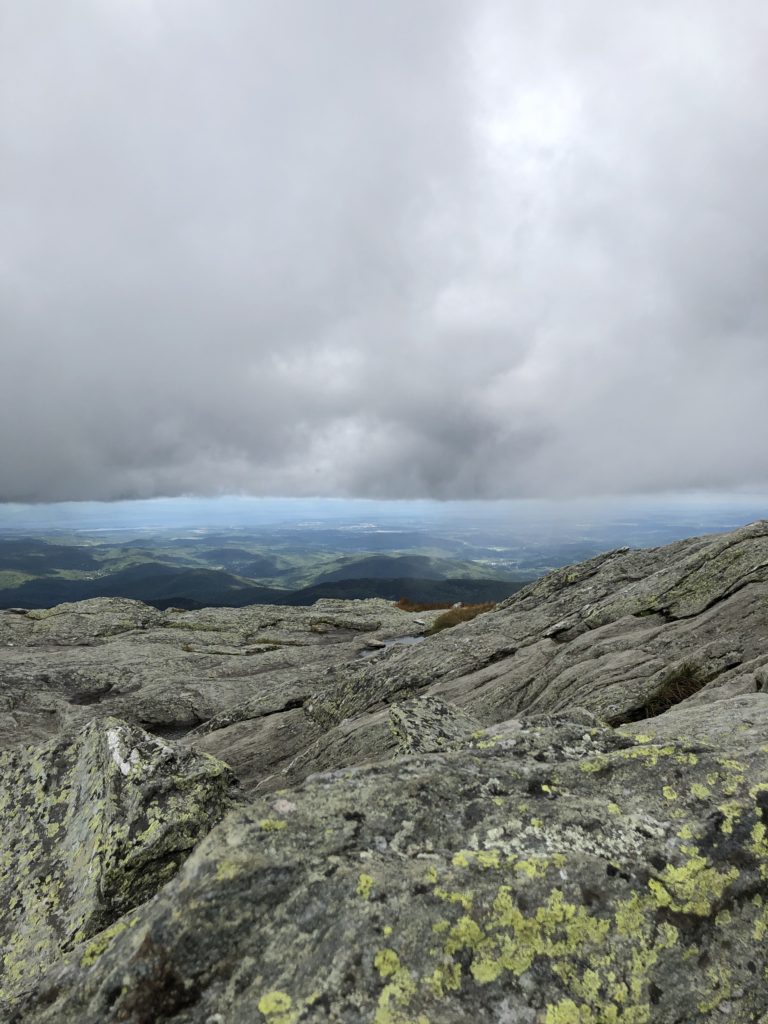



 August is a month of vacations that have been saved for last, a month of summer sports team finals, a month of lazy afternoons, cool nights, fireflies and T-storms. It is also a month when I walk my dog in the predawn darkness and am surprised to find the wooded trails closing in well before an earlier sunset. It is a time of growing anticipation for the back to school crowd and an almost panicked dash to fit in that paddle, climb, swim, century or rail trail that seemed a sure thing in May.
August is a month of vacations that have been saved for last, a month of summer sports team finals, a month of lazy afternoons, cool nights, fireflies and T-storms. It is also a month when I walk my dog in the predawn darkness and am surprised to find the wooded trails closing in well before an earlier sunset. It is a time of growing anticipation for the back to school crowd and an almost panicked dash to fit in that paddle, climb, swim, century or rail trail that seemed a sure thing in May. But, please, stop. Take a deep breath. You’ve got this. If you find yourself treading water, get swimming! August is dignified. It does not push us into a frenzy. But it says, if you want to do ______________, get organized and just do it. July suggests an infinite number of minutes and even hours. August says, “not so.” But August is not stingy. The daylight and conditions beckon and sustain.
But, please, stop. Take a deep breath. You’ve got this. If you find yourself treading water, get swimming! August is dignified. It does not push us into a frenzy. But it says, if you want to do ______________, get organized and just do it. July suggests an infinite number of minutes and even hours. August says, “not so.” But August is not stingy. The daylight and conditions beckon and sustain. This afternoon as I walked a country road giving my pup and me a quiet day sandwiched between last week and next, I deliberately looked for signs of change. The grasses are more lush, goldenrod is beginning to burst forth, and soon enough the fields of corn will produce sweet ears to savor. OK, that’s good. That’s something that is better than July.
This afternoon as I walked a country road giving my pup and me a quiet day sandwiched between last week and next, I deliberately looked for signs of change. The grasses are more lush, goldenrod is beginning to burst forth, and soon enough the fields of corn will produce sweet ears to savor. OK, that’s good. That’s something that is better than July. August was so named in 8 BC because of Augustus Ceasar. But I prefer to consider a few words from the definition of the word itself: respected, celebrated, honored. Don’t you agree that to respect this month, to celebrate each day’s opportunity, and to honor our well-being and those with whom we share space – that these might be better concepts to apply to this fruitful month? And, perhaps now, today, not tomorrow or next week, is the very time to take a second look at how we are living our own uniquely individual summer experiences. Avoid regrets, drop everything you can, and indulge in the season. Happy August.
August was so named in 8 BC because of Augustus Ceasar. But I prefer to consider a few words from the definition of the word itself: respected, celebrated, honored. Don’t you agree that to respect this month, to celebrate each day’s opportunity, and to honor our well-being and those with whom we share space – that these might be better concepts to apply to this fruitful month? And, perhaps now, today, not tomorrow or next week, is the very time to take a second look at how we are living our own uniquely individual summer experiences. Avoid regrets, drop everything you can, and indulge in the season. Happy August.
 Sharing the summer months with an informal group of individuals loosely connected by their interest in hiking is proving to be a learning experience for all of us. Arguably, any able-bodied person can hike. But does everyone want to? No. I certainly didn’t.
Sharing the summer months with an informal group of individuals loosely connected by their interest in hiking is proving to be a learning experience for all of us. Arguably, any able-bodied person can hike. But does everyone want to? No. I certainly didn’t. And then came Sophie, my now almost 3-year-old Chocolate Lab who opened this wonderful world for me. Because training is in my psyche, poor Sophie underwent/undergoes lots and lots of training. An exuberantly friendly pup (she IS a Lab, after all) with reliably good trail manners, she also serves as a canine GPS. All this is to say that because there is nothing (except swimming) that Sophie loves more than trails, I have become an avid hiker!
And then came Sophie, my now almost 3-year-old Chocolate Lab who opened this wonderful world for me. Because training is in my psyche, poor Sophie underwent/undergoes lots and lots of training. An exuberantly friendly pup (she IS a Lab, after all) with reliably good trail manners, she also serves as a canine GPS. All this is to say that because there is nothing (except swimming) that Sophie loves more than trails, I have become an avid hiker! How does one define hiking, anyway? There are meandering forest trails, picturesque bogs, barely defined paths, and rocky climbs with steep precipices and vistas to die for. It’s all hiking and, ultimately, it’s all about making the decision to get out the door and go.
How does one define hiking, anyway? There are meandering forest trails, picturesque bogs, barely defined paths, and rocky climbs with steep precipices and vistas to die for. It’s all hiking and, ultimately, it’s all about making the decision to get out the door and go.
 Each hike, each day, each weather condition, each hiking partner(s), each new pair of shoes, each trail snack, each guide book, each hangover (oops), each season, each year – there are no two hikes alike and no one hike that stays the same. It’s all experience – and connection.
Each hike, each day, each weather condition, each hiking partner(s), each new pair of shoes, each trail snack, each guide book, each hangover (oops), each season, each year – there are no two hikes alike and no one hike that stays the same. It’s all experience – and connection.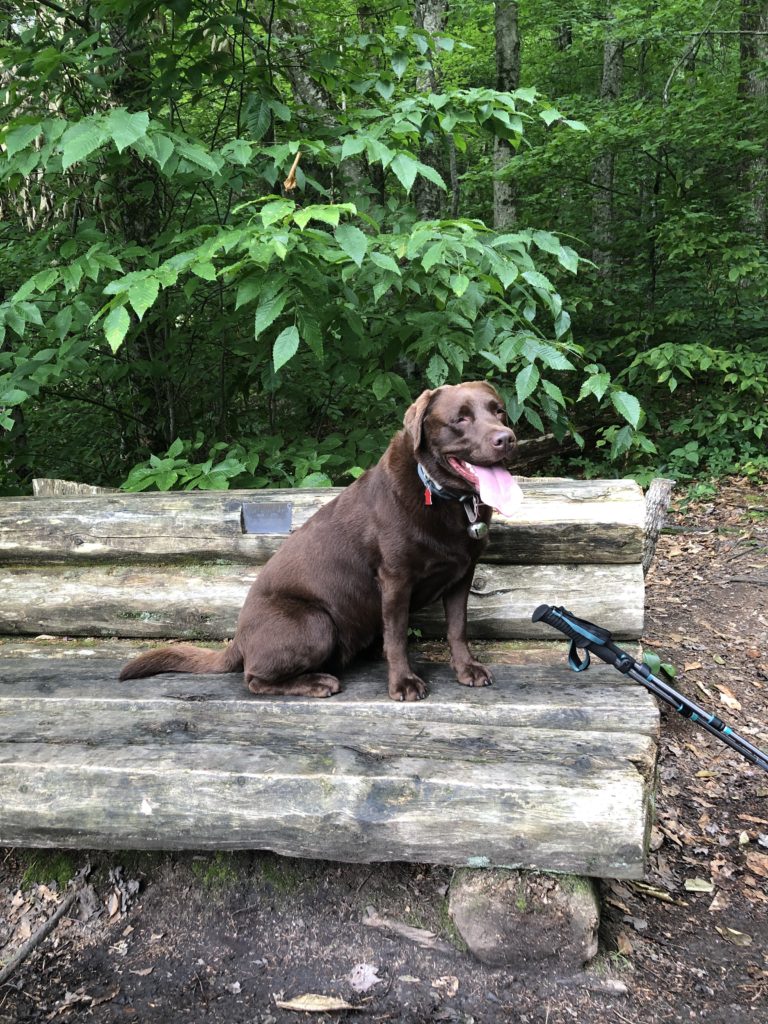



 I prefer dates, nuts, raisins, trail mix, ok and yes a Clif bar that I always share with my pup, Sophie. I do not promote trendy engineered foods such as power drinks and bars, but rather support “real” foods. I do think that part or all of your drinking water should contain some electrolytes (I prefer Skratch https://www.skratchlabs.com/collections/drinks/products/sport-hydration-drink-mix?gclid=CjwKCAjwmZbpBRAGEiwADrmVXhtL_Wt_SWL_brlBskRWrAyTwOGxdUjb1UfUquBWSHrhhaly2kNGMBoCIcAQAvD_BwE&variant=42591625797or Tailwind https://www.tailwindnutrition.com) and in fact, sipping on Tailwind along the way eliminates a need for food at all unless you get hungry! Oh and Lara is an excellent choice for a bar. Avoid sugary stuff as that will drop you too soon.
I prefer dates, nuts, raisins, trail mix, ok and yes a Clif bar that I always share with my pup, Sophie. I do not promote trendy engineered foods such as power drinks and bars, but rather support “real” foods. I do think that part or all of your drinking water should contain some electrolytes (I prefer Skratch https://www.skratchlabs.com/collections/drinks/products/sport-hydration-drink-mix?gclid=CjwKCAjwmZbpBRAGEiwADrmVXhtL_Wt_SWL_brlBskRWrAyTwOGxdUjb1UfUquBWSHrhhaly2kNGMBoCIcAQAvD_BwE&variant=42591625797or Tailwind https://www.tailwindnutrition.com) and in fact, sipping on Tailwind along the way eliminates a need for food at all unless you get hungry! Oh and Lara is an excellent choice for a bar. Avoid sugary stuff as that will drop you too soon.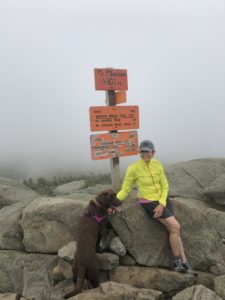

 Perhaps you gather your gear and block out a small space at your local gym. Or perhaps you are fortunate enough to be able to dedicate a few square yards or even a room in your home to your fitness quest. Let’s run with the latter.
Perhaps you gather your gear and block out a small space at your local gym. Or perhaps you are fortunate enough to be able to dedicate a few square yards or even a room in your home to your fitness quest. Let’s run with the latter.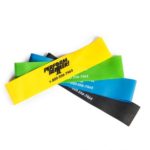 COMPONENTS OF A HOME GYM. Now, in a new home, I can label a small oddly shaped but beautifully bright area my “home gym.” As I began to equip the renovated space to make it work for me (thus functional) I found it quite exciting to define my fitness needs and the least amount of gear I could use to meet those needs.
COMPONENTS OF A HOME GYM. Now, in a new home, I can label a small oddly shaped but beautifully bright area my “home gym.” As I began to equip the renovated space to make it work for me (thus functional) I found it quite exciting to define my fitness needs and the least amount of gear I could use to meet those needs.

